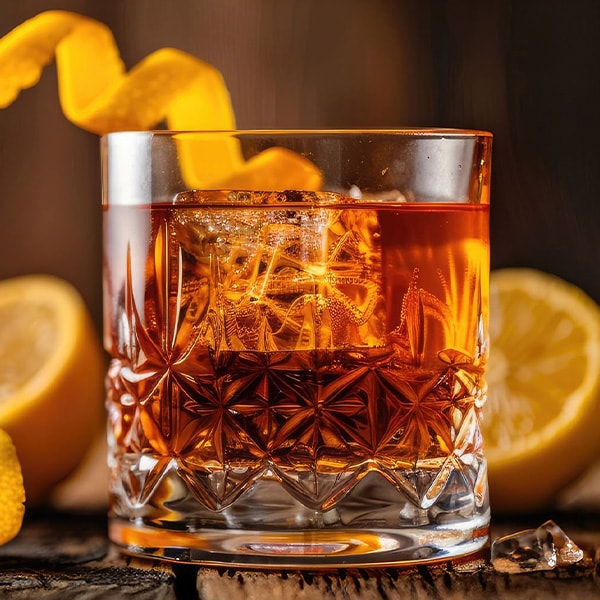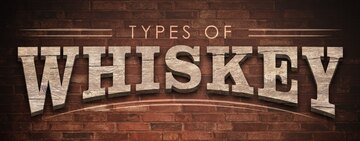Sazerac: the official cocktail of Louisiana. If that prestigious title doesn’t make you the least bit curious about this whiskey cocktail, then maybe learning how to make it will. This classic offering is a reemerging trend as bar patrons seek more traditional flavor profiles that celebrate base spirits. Whether you are looking to bring it back to the basics or simply build your beverage arsenal, below we will walk you through the steps of building a traditional Sazerac cocktail that will evoke a nostalgic warmth and an elevated feel for your guests.
Shop All Bartending SuppliesSazerac History
The story unfolds in New Orleans during the vibrant 1830s, where pharmacist and drugstore owner Antoine Amedee Peychaud crafted his own medicinal tonic bitters that tout the balanced aromatic flavors of anise and cherry with a whisper of mint. He won over guests by combining his now-renowned Peychaud's bitters with Sazerac de Forge cognac to serve delightful toddies. This unique concoction quickly gained popularity, prompting the Sazerac Coffee House to embrace Peychaud’s bitters in their own blend of Sazerac cognac, sugar, and absinthe. This marked the birth of the iconic cocktail. As time passed, cognac was skillfully replaced with whiskey, leading to the Sazerac cocktail that enthusiasts cherish today.
Traditional Sazerac Recipe

Yield: 1 serving
Total Time: 5 minutes
Ingredients
- 1/2 ounce simple syrup
- 7 dashes of bitters (Peychaud’s)
- 2 1/2 ounces rye whiskey
- 1/2 ounce Absinthe
- Lemon peel
Directions
- Ice the rocks glass you'll be serving your Sazerac in.
- Add simple syrup, bitters, and rye whiskey to mixing glass.
- Add ice to mixing glass with and stir with bar spoon.
- Remove ice from rocks glass.
- Rinse the rocks glass by filling it with absinthe and swirling it around to coat the interior walls of the glass. Once the glass is coated, pour out remaining absinthe.
- Pour mixed ingredients into the rocks glass using a cocktail strainer.
- Peel skin from the lemon.
- Squeeze lemon peel over rocks glass. Rim the glass with juice from the lemon peel.
- Garnish finished drink with the lemon peel and serve.
Adding this sazerac recipe to your bar menu will deliver speakeasy charm and classic cocktail flavor to your guests. This rye whiskey cocktail will bring warmth to your patrons enjoying a cool night on your restaurant patio or those just looking to indulge in flavors of the past!
Related Resources

Types of Whiskey
To keep your business well-stocked with bar essentials and appeal to the whiskey lovers of the world, it's good to have some foundational whiskey knowledge. Most fans of this complex spirit gravitate towards a specific type of whiskey and are loyal to certain brands. Whether you're making an Old Fashioned or discussing the merits of single malt scotch, knowing the differences between types of whiskey goes a long way. In this article, we'll explain all things whiskey so you can identify the main differences between the types and use this information to your advantage. Shop All Whiskey Glasses Click below to learn more about the different types of whiskey: Bourbon Whiskey Tennessee Whiskey Rye Whiskey Scotch Whisky Irish Whiskey Canadian Whisky Japanese Whisky Whiskey FAQ Whiskey Chart What Is Whiskey? Whiskey is a barrel-aged alcoholic spirit made from grains like barley, rye, corn, or wheat. It sounds simple, but there are different types of whiskey, all with their own labeling requirements, distillation methods, and flavor profiles. Some whiskeys have sweet notes, and some are more assertive in flavor. Certain whiskeys are meant to be served neat, and some benefit from a drop of water. You'll even see some types of whiskey spelled differently. Whiskey, with an "e," is typically used for Irish whiskey and many American whiskeys. On the other hand, whisky, without the "e," is reserved for Scotch whisky and any whisky made in the Scottish tradition, such as Canadian and Japanese whiskies. Different Types of Whiskey Our detailed list will help you identify the flavor profiles of different types of whiskey, as well as the strict labeling requirements associated with each type: 1. Bourbon Whiskey We'll begin with one of the most well-known types of American whiskey: bourbon. Bourbon is made with corn mash, which makes it sweeter than whiskeys made with other grains. The corn produces caramelized notes of maple syrup and warm honey. After barrel aging in charred oak barrels, the flavor becomes more layered with notes of spice and vanilla. Bourbon can be enjoyed neat or with a drop of water, but one of the most famous bourbon cocktails is the Kentucky Mint Julep. Bourbon whiskey is an American whiskey made with at least 51% corn mash. To be classified as bourbon, the spirit must also be produced in the United States and aged in new white oak barrels. Barrels cannot be reused between batches; they must be brand new, freshly charred, and unused. Famously, bourbon comes from Kentucky, but it can technically be made anywhere in the country. What Is Straight Bourbon? To be marketed as a straight bourbon, the spirit must be aged for a minimum of two years in the required new oak barrels. Straight bourbon contains no colorings, flavorings, or additives besides water. What Is Corn Mash? Corn mash is the signature ingredient of bourbon. It’s made from crushed corn kernels, malted barley, water, and yeast. After these ingredients are combined, the mash is heated to start the fermentation process. Mash can be made from a variety of grains or even fruits, but bourbon is strictly made with 51% corn mash. What Does Bourbon Taste Like? Sweet and woodsy with notes of oak, caramel, and vanilla Bourbon Whiskey Brands: Woodford Reserve, Knob Creek, Maker's Mark Bourbon Whiskey Cocktails: Old Fashioned, Mint Julep, Manhattan 2. Tennessee Whiskey Just like bourbon, Tennessee whiskey is made from a mash that contains at least 51% corn. It has the same caramel-like sweetness of bourbon, but additional filtering mellows out the taste by removing some of the more assertive alcohols and esters. The strong corn flavor of the whiskey is also softened, allowing other flavor notes to shine through. Tennessee whiskey can be classified as a type of bourbon whiskey, but it has some additional requirements that make it unique. First of all, it has to be produced in the state of Tennessee. Secondly, Tennessee whiskey must be filtered through charred maple wood chips before aging. This step is called the Lincoln County process, charcoal leaching, or charcoal mellowing. What Does Tennessee Whiskey Taste Like? Sweet and mellow with notes of oak, maple, and vanilla Tennessee Whiskey Brands: George Dickel, Jack Daniel's, Uncle Nearest Tennessee Whiskey Cocktails: Jack and Cola, Lynchburg Lemonade, Tennessee Highball 3. Rye Whiskey Rye is a type of whiskey with a sharp, peppery bite that is starkly different from whiskey made with other grains. American rye whiskey is made with 51% rye grain mash, which imparts a dry, earthy flavor instead of the sweet caramel flavor produced by corn mash. But just like bourbon, rye whiskey must be distilled in the US and aged in new oak barrels. To be labeled as straight American rye, the whiskey has to be aged for at least 2 years and contain no additives. Rye vs Bourbon Old Fashioned The Old Fashioned is a famous whiskey cocktail that can be made with bourbon or rye. It all comes down to the customer’s whiskey preference. Rye will produce an Old Fashioned that is spicy and dry, which is balanced by the sweetener used in the drink, usually a sugar cube. On the other hand, bourbon has a sweet flavor already, so less sugar can be used and sometimes the bitters are increased. The Manhattan cocktail is another mixed drink that can be made with either bourbon or rye to create a different flavor profile. Canadian Rye vs American Rye America isn’t the only country with a love for rye whiskey. Rye is also produced in Canada, but it differs from American rye whiskey. Instead of using a mash made primarily from rye, Canadian rye whiskey is made from other grains with just a small amount of rye added for flavor. What Does Rye Whiskey Taste Like? Assertive, dry, earthy, spicy Rye Whiskey Brands: Whistlepig, Pikesville Rye, Wild Turkey Rye Whiskey Cocktails: Rye Old Fashioned, Sazerac, Manhattan 4. Scotch Whisky To be labeled scotch, the whisky must be made in Scotland from primarily malted barley and aged at least 3 years in oak casks. Single malt scotch must be made from 100% malted barley and produced in a single distillery. The flavor profile of scotch is determined by the region where it was produced, the barrels used for aging, and whether the whisky is single malt or blended. Peat Scotch Peat plays a huge role in Scottish whisky production and contributes to the strong, earthy flavors of single malt scotch. But what is peat, and what does it have to do with whisky? Peat is a type of plant matter that forms from decomposing moss and other vegetal growth in the bogs (or peatlands) of Scotland. The Scottish tradition is to dry barley over smoked peat before making the mash, which adds assertive notes of tar, ash, and smoke. Peat is formed from plant matter local to the area, which is why regional distilleries in Scotland each have their own signature flavor. Unpeated Scotch Not all Scotch whisky is peated. There are single malts produced without smoked peat, which allows other flavors from the malted barley or wood barrels to shine through. Unpeated scotch may exhibit sweet, fruity, or chocolate notes. What Does Scotch Whisky Taste Like? Blended Scotch may be smooth, balanced, and sweet; Single malt Scotch may be smoky, peaty, and assertive; Unpeated single malt may be malty, fruity, and biscuity Scotch Whisky Brands: Dewar's, Glenlivet, Johnnie Walker Scotch Whisky Cocktails: Penicillin, Rob Roy, Scotch Toddy 5. Irish Whiskey Irish whiskeys are likely to be triple distilled, lending a soft, smooth mouthfeel to the spirit that makes it easy to sip. It’s also common for Irish whiskeys to be made from barley dried in a closed kiln, which doesn’t add the smoky flavor associated with scotch. The types of barrels used in maturation also add more complex flavors to whiskey as it ages. Irish whiskey is known for being less sweet than bourbon and more mellow than scotch. Irish whiskey can be difficult to define because of the experimentation at play with modern distilleries. One of the simplest requirements is that Irish whiskey must be produced in Ireland. It must be made with a mash that contains malted barley and aged in wooden casks for at least 3 years. To be labeled Irish whiskey, the spirit must contain no additives other than water and caramel coloring. Many Irish whiskeys are blended, but there are also Irish single malts, grain whiskeys, and pot still whiskeys. What Is Single Pot Still Whiskey? Single pot still whiskey is a type of Irish whiskey made with at least 30% malted barley and 30% unmalted barley. The unmalted barley, also called green barley, adds a strong cereal flavor to the whiskey. To be labeled single pot still, the whiskey must also come from a single distillery. What Does Irish Whiskey Taste Like? Smooth and slightly sweet with notes of oak, honey, and toasted grains Irish Whiskey Brands: Jameson, Tullamore Dew, Bushmills Irish Whiskey Cocktails: Irish Slammer, Irish Coffee, Pickleback 5. Canadian Whisky Traditional Canadian whisky is known for its blending, whether it’s blending batches made from different grains or blending whisky styles from other countries. Canadian whisky blends may even contain percentages of American bourbon or single malt scotch. To help achieve the perfect blend, Canadian distillers use a special technique. They produce a base whisky with a high alcohol content and a flavoring whisky with a low alcohol content. These separate batches are blended to strike the right balance between proof and flavor. To be labeled as Canadian whisky, the spirit must be made in Canada and aged for at least 3 years in wooden barrels. The barrels can be new or used, and the mash can be made with any cereal grain. Caramel color and up to 9.09% additional flavorings can also be added. These relaxed requirements make room for distilleries to experiment with different grains and blends. What Does Canadian Whisky Taste Like? Smooth and light with spicy notes of vanilla Canadian Whisky Brands: Crown Royal, Canadian Club, Seagram's Canadian Whisky Cocktails: CC and Ginger, Canadian Whisky Sour, Seven and Seven 7. Japanese Whisky Japanese whisky is known more for its innovation than for a particular style. The Japanese method of distillation was borrowed from the Scottish tradition, but there are aspects of the process that Japanese distillers have chosen to refine. For one, Scottish distilleries depend on one or two still sizes and shapes, but Japanese distillers experiment with different still sizes and shapes. During barrel aging, the use of a Japanese oak called mizunara wood imparts a range of distinct flavors like citrus, coconut, or sweet spices. Japan has been producing whisky since the 1920s, but until recently the labeling requirements were not clearly defined. As of April 2021, Japanese whiskies must be produced in Japan and must include malted grain in the mash. Any water used in production must be extracted in Japan, and the spirit must be aged in wooden casks for at least 3 years. No additives besides caramel coloring can be used in the whisky. What Does Japanese Whisky Taste Like? Smooth, balanced, delicate notes of smoke, floral, or citrus Japanese Whisky Brands: Yamazaki, Suntory, Nikka Japanese Whisky Cocktails: Japanese Highball, Mountainside, Mizuwari Whiskey FAQ If you want to understand this popular spirit a little better, check out the answers to some commonly asked questions below: Whiskey or Whisky? Back in the late 19th century, Irish whiskey distillers decided to add an "e" to whiskey to set their products apart from Scottish distilleries. Since Irish whiskey was a hit in America at the time, American distillers followed suit and adopted the Irish spelling. That's why you'll often see bourbon, Tennessee, and rye whiskeys spelled with the Irish "e." Canadian, Scottish, and Japanese distillers prefer the spelling "whisky." What Is Single Malt? Single malt Scotch is basically whisky that comes from one distillery in Scotland and is made from 100% malted barley. Single malts can actually be a blend of different batches from the same distillery, as long as they meet the requirements. When you sip on a single malt, you're tasting the essence of the distillery and the unique flavors that come from the region where it's made. Think about the peat used to smoke the barley and the type of wood that ages the whisky - it all adds to the charm and artistry of single malts. What Is Blended Whiskey? Blended Scotch is a mix of single malt and grain whiskies, which are made from grains like corn or wheat instead of just barley. The goal of blending is to create a consistent flavor that's just right every time. Skilled master blenders work their magic by combining different single malts and grain whiskies to find the perfect balance. Some people think blended whisky is not as good as single malt because it's made with cheaper grains that don't need as much time to mature as barley. But, that's not always the case! Today, there are some top-notch blended whiskies out there that have been crafted with the utmost care and attention to detail. Types of Whiskey Chart For a quick visual reference, check out our whiskey chart below: Whiskey can be a complicated subject to navigate, especially when you factor in the different styles and their devoted fan bases. Now you should be armed with enough information to stock your bar with the finest whiskeys and make educated recommendations to your guests.

Manhattan Cocktail Recipe
Manhattan cocktails are a versatile classic. You can alter their flavor by using different types of whiskey, vermouth, or bitters. Traditionally, bartenders serve Manhattans in martini glasses garnished with maraschino cherries. Mixologists who want to serve Manhattans on the rocks opt for lowball or coupe glasses. Whichever serving vessel you choose, the Manhattan cocktail recipe is an easy-to-make classic that has satisfied customers for over a century. Shop All Martini Glasses How to Make a Manhattan Cocktail Video Use the following video to learn how to make a Manhattan cocktail: <iframe itemprop="embedURL" width="560" height="315" src="https://www.youtube.com/embed/2bUmyu4RHTI?rel=0" frameborder="0" allowfullscreen></iframe> Manhattan Recipe This manhattan cocktail recipe makes 1 drink. Prep Time: 5 minutes Manhattan Cocktail Ingredients 2 1/2 ounces whiskey 3/4 ounces sweet vermouth 1 dash of Angostura bitters 1 maraschino cherry Directions Add whiskey, sweet vermouth, and bitters to a mixing glass. Stir the mixture to combine ingredients. Strain the cocktail into a chilled martini glass or a lowball glass with ice. Garnish with maraschino cherry and serve. What Is a Manhattan Cocktail? The Manhattan is one of the oldest known cocktail recipes, with origins dating back to the late 1800s. It has remained one of the most popular cocktails in the U.S., even through the Prohibition era. This cocktail has a perfect balance of flavors as the sweetness of the vermouth, the booziness of whiskey, and the sharpness of the bitters combine to create a rich palatal impression. Which Fruit Is the Traditional Garnish for a Manhattan Cocktail? Maraschino cherry is the traditional garnish for a classic Manhattan cocktail. Many bartenders also like to include an orange peel. History of the Manhattan Cocktail The true origins of the Manhattan cocktail are shrouded in mystery, and no one is positive where or when the cocktail emerged. One of the most popular stories surrounding the creation of the drink is that it originated in New York City's Manhattan Club circa 1874. Legend has it that the cocktail was concocted at a party thrown in honor of politician Samuel J. Tilden by Jennie Jerome, a socialite who would become the mother of Winston Churchill. They held the party at the Manhattan Club, so the cocktail took the name of its birthplace. While this theory is popular, it has been debunked over the years because, at the time of the supposed party, Jennie Jerome was in Europe, pregnant with her first child. Now, many historians believe the drink originated in the 1860s, but the exact date and place are still unknown. Although the true origins of the Manhattan are a mystery, the recipe has survived and is still one of the most popular cocktails today. The Manhattan is a timeless cocktail people drink in bars, country clubs, cigar lounges, and banquet halls across the world. Since there are only three ingredients in the recipe, your bartender can pour these drinks out fast and keep the service moving. You can also reinvent this simple mixed drink and offer creative twists on the classic Manhattan cocktail.

What Are Bitters?
Bitters are concentrated flavor extracts made by infusing herbs, spices, roots, and other botanicals in alcohol. They are mostly used to add depth and complexity to cocktails, enhancing the overall flavor profile and creating a more well-rounded drink. There are countless varieties of bitters available, with their purpose ranging from digestive aids to flavoring agents used in sauces, marinades, and dressings. Bitters play an important role in the creation of sophisticated cocktails and mocktails, making it critical that aspiring bartenders understand the different types of bitters and how to use them. Shop All Cocktail Bitters Click below to learn more about cocktail bitters: What Are Bitters Made Of? What Are Digestive Bitters? What Are Cocktail Bitters? Types of Bitters Making Your Own Bitters Bitters FAQs What Are Bitters Made Of? While their ingredient ratios vary, bitters are made of water, alcoholic spirits, and botanicals. High-proof alcoholic spirits are ideal for making bitters. Carminative herbs, which aid digestion, are the most traditional botanicals. However, many modern bitters makers choose their botanicals for flavor alone. What Do Bitters Taste Like? Just like bourbon and rye are both types of whiskey but have vastly different flavor profiles, the way bitters taste depends on their ingredients and how they’re made. It’s important to note that not every cocktail with bitters has a strong bitter flavor. For example, Peychaud’s bitters taste slightly sweet with fruity notes. Bitters will enhance other flavors such as sourness or sweetness. What Are Bitters Used For? There are two major categories of bitters: digestive bitters and cocktail bitters. As their names suggest, digestive bitters help people digest food, and cocktail bitters are an ingredient in mixed beverages to enhance cocktail mixes. Benefits of Bitters Bitters are a versatile ingredient found behind the counter of most bars and nightclubs. But why are bitters considered bar essentials, and what are the benefits of bitters? We explain the top three benefits of using bitters in your cocktails. Bitters give your drinks complexity and depth of flavor. Bitters are a required ingredient for many popular cocktails. Just like digestive bitters, cocktail bitters are wonderful for the stomach and can aid with digestion. What Are Digestive Bitters? Digestive bitters, also known as digestifs, help patrons digest their meals. Digestifs are popular in Europe but lack prominence in North America. Digestive bitters are sipped straight or on the rocks and are usually served as an after-dinner drink. Aperitifs are another variety of digestives, but they’re served before meals. Best Brand of Digestive Bitters Some of the most famous digestive bitters brands include: Amaro Campari Aperol Jagermeister Unicum Are Bitters Good For You? Digestive bitters are a natural and effective way to support your digestive health. They can aid in digestion, relieve bloating and gas, support liver function, enhance appetite and nutrient absorption, and promote overall wellness. While digestive bitters can be a helpful addition to your wellness routine, it's important to note that they are not a magic cure-all. They work best when used in conjunction with a balanced diet, regular exercise, and other healthy lifestyle habits. What Are Cocktail Bitters? Cocktail bitters are a liquid flavoring agent used in alcoholic drinks. They are an essential ingredient in many staple bar drinks. Cocktail bitters are more concentrated than digestive bitters and have extraordinarily strong flavors. Subsequently, bartenders add cocktail bitters in small amounts to their drink recipes and never serve them to customers straight. They are the type of bitters most North American consumers are familiar with and are often used in mocktails. Best Cocktail Bitters Brands While the bitters market covers emerging brands and exotic flavors, there are three major bitters brands you should have stocked in your bar to make classic cocktails. Angostura Bitters Peychaud’s Bitters Regan’s Orange Bitters No. 6 What Is Angostura Bitters? Angostura bitters are the original aromatic bitters. They are the namesake product of the oldest bitters brand, Angostura, which shaped the emerging cocktail industry when it launched in the early 1800s. Angostura bitters are a necessary ingredient for creating cocktails like the Manhattan and the Old Fashioned. What Do Angostura Bitters Taste Like? Angostura bitters have a spicy flavor with hints of clove and cinnamon. Angostura Bitters Cocktails - Old Fashioned, Manhattan, Whisky Sour, Trinidad Especial, Brooklyn’s Finest What Is Peychaud's Bitters? Peychaud's bitters are one of the main ingredients in a traditional Sazerac cocktail. It was created by Creole apothecary Antoine Amedee Peychaud around 1830. What Do Peychaud's Bitters Taste Like? Peychaud's bitters have a predominant anise and nutmeg aroma with a hint of mint that gives it a sweet flavor. Peychaud’s Bitters Cocktails - Sazerac, Vieux Carre, Seelbach, Cocktail A La Louisiane, Queens Park Swizzle What Is Orange Bitters? Orange bitters are made from the dried zest of a bitter-orange peel, like Seville oranges, and various spices. The most popular brand of orange bitters was made by mixologist Gary Regan in the 1990s. What Do Orange Bitters Taste Like? Orange bitters have a citrus and spice flavor from ingredients like cardamom, anise, and caraway seed. Orange Bitters Cocktails - Negroni, Adonis, The Opera Cocktail, The Revolver, Apple Cider Cocktails What Is Chocolate Bitters? Chocolate bitters are crafted by infusing cocoa nibs, cocoa beans, or chocolate extract in alcohol, along with a blend of aromatic botanicals. This process extracts the deep, earthy flavors of chocolate and creates a complex profile that can elevate your favorite cocktails to new heights. What Do Chocolate Bitters Taste Like? These bitters are crafted to provide a subtle hint of chocolate, rather than overpowering your taste buds with sugary sweetness. Chocolate Bitters Cocktails - Manhattan, Negroni, Old Fashioned Types of Bitters There are many types of bitters to choose from, and mixologists are constantly creating new and interesting options. We explain the main types of cocktail bitters below: Aromatic Bitters - Aromatic bitters are the largest and most well-known type of cocktail bitters. Companies flavor their aromatic bitters with herbs, spices, and barks, which give them powerful aromas. This is one of the oldest bitters varieties, and it’s required for many traditional cocktail recipes. Citrus Bitters - Citrus bitters are high-proof alcohols infused with the peels of citrus fruits. Orange bitters are the most popular type of citrus bitters. Other types of citrus bitters include lemon, grapefruit, and lime. Bartenders rely on them to make a variety of cocktail recipes. Herbal Bitters - Herbal bitters are one of the most varied categories of bitters in terms of flavor and aroma. Tarragon, thyme, and lavender are some of the most popular types of herbal bitters. Bean and Nut Bitters - Bean and nut bitters are relatively new inventions, but they are growing in popularity among adventurous bartenders and mixologists. Chocolate bitters and coffee bitters are the two most popular bean bitters varieties. Walnut, macadamia, and pecan are the most common nut bitters you'll encounter. Making Your Own Bitters Buying bitters may be convenient or even necessary to make certain cocktails, but you also have the option to make your own bitters. You probably already have the tools you need at your bar, so you just need to choose a base alcohol and purchase your desired botanicals. Creating your own in-house bitters allows you to fine-tune ingredient ratios and create the perfect complement to your cocktail menu. If you make your own bitters, you can serve them in attractive bitters bottles. Using glass bottles for serving bitters helps give them an upscale aesthetic, which is ideal for modern bars and tasting rooms that want to take their drink service to the next level with professional-looking bartending supplies. Bitters FAQs Because of their diverse ingredients, uses, and terminology, bitters raise questions when bartenders incorporate them into their cocktails. We answer a few of the most popular bitters questions below. How Much Is a Dash of Bitters? A dash of bitters is usually 6-8 drops or 1/8th of a teaspoon. However, multiple factors affect how much liquid comes out with each dash, such as the size of the hole in the bottle, the angle of the bottle, the force of the shake, and how much liquid is in the bottle. If you want a precise method of adding bitters to your cocktails, use a glass bottle with a dropper. Bitters Substitute While you can substitute one brand of bitters for another to reimagine classic cocktails, you cannot achieve the distinct flavor complexity bitters offer with any other ingredient type. If you run out of bitters mid-shipment cycle and need a substitute for bitters, you can consider using citrus peels to mimic bitters. However, your customers will probably notice a loss of flavor quality. It’s advisable to forgo making drinks that require bitters until your next shipment arrives. Do Bitters Go Bad? Much like alcohol's shelf life, bitters won’t perish for many years. Bitters’s high alcohol contents act as preservatives and give them shelf lives comparable with other spirits. Most unopened bitters bottles are viable for a decade before their flavor alters. An unopened bottle of bitters will last indefinitely. How Much Alcohol Is in Bitters? On average, a bottle of cocktail bitters is 35-45% alcohol. However, most companies market bitters as non-alcoholic because cocktail recipes call for dashes of bitters that don’t produce a traceable ABV. Non-Alcoholic Bitters Non-alcoholic bitters are made using the same basic principles as their alcoholic counterparts but without the alcohol content. Although normal bitters don’t normally produce a traceable ABV due to being added in low amounts, there are still consumers who prefer their bitters to be entirely alcohol-free. Fully non-alcoholic bitters allow individuals who abstain from alcohol to still enjoy the unique flavors and sensory experience that bitters provide, making them a great option for sober bars, restaurants, and caterers looking to cater to a diverse range of customers. History of Bitters People have been adding bitter ingredients and flavors to alcoholic beverages since the time of the ancient Egyptians, but our modern concept of bitters emerged in the early 1800s as medicine for relieving stomach pain. Many bitters companies closed during the American Prohibition era, threatening the ingredient’s permanent loss. Thankfully, mixologists and craft cocktail makers have brought bitters back to prominence in recent years. Bitters are a versatile and essential ingredient in the world of cocktails and continue to trend due to their use in popular mixed drinks. With their rich history, wide range of flavors, and various commercial applications, bitters offer a world of possibilities for both professional bartenders and amateur mixologists. Whether you’re looking to create a new cocktail menu or start your own sober bar, understanding the role bitters play in the drink creation process is critical to success.





